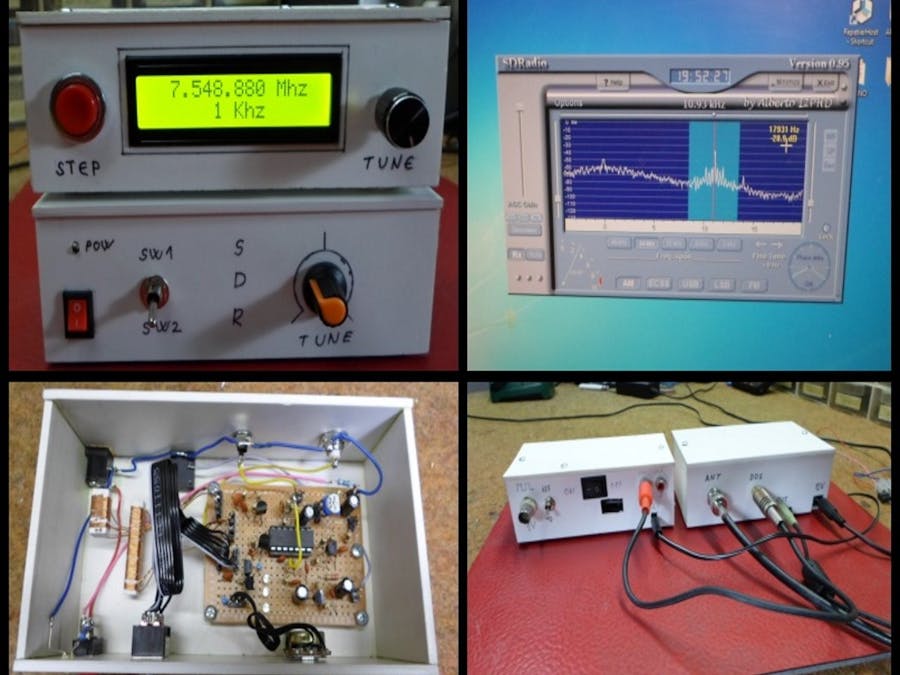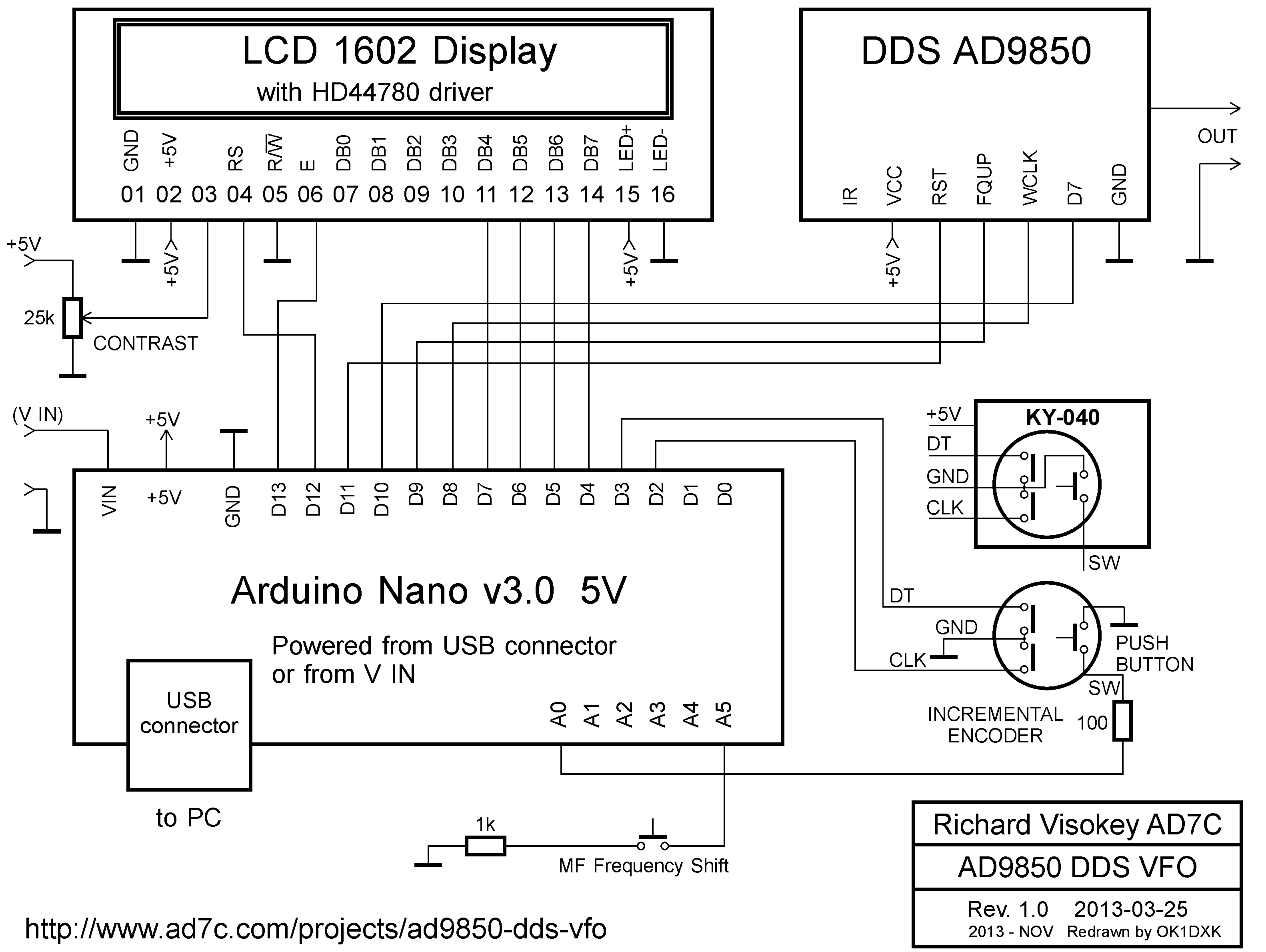Software-defined radio (SDR) is a radio communication system where components that have been traditionally implemented in hardware (e.g. mixers, filters, amplifiers, modulators/demodulators, detectors, etc.) are instead implemented by means of software on a personal computer or embedded system.
In one of my earlier videos I described making cheap Arduino DDS VFO with AD9850 module. You can watch this video at:
https://www.youtube.com/watch?v=upxaa2QvQxo&t=16s
This device is a solid foundation for making quality SDR radio. In the following video I present one such radio. The input part of the circuit is is taken from PA2OHH Web and is actually The Direct Conversion receiver. At the input we start with a potentiometer of 1 k ohm, it is the RF attenuator. The next circuit is the preselector, switchable to the ranges 7-14 MHz and 14-30 MHz. Tuning of the preselector is done with a potentiometer. The tuning voltage is stabilized by 4 LEDs but of course you can also use a 6.8 V or 8.2 V zener diode.
The two transistor RF amplifier increases the sensitivity and prevents also that Local Oscillator signals from the mixer are leaking to the antenna input. This would cause a lot of hum.
The mixer is a CMOS switch 74HC4066. Adjust the 5k potentiometer for the lowest AM detection of strong broadcast stations. This is done at the most critical frequency, find it by tuning the preselector across the bands. The mixer is followed by a transistor amplifier. The output is connected to the line input of the soundcard.
Audio filtering is done by one of free DSP software.The most popular softwares of this type are:
- HDSDR "http://www.hdsdr.de"
- SDRadio "https://www.sdradio.eu/weaksignals/sdradio/index.html"
- and many other...
In this particular case I use SDRadio as the simplest software for radio signal processing. Also with this receiver and free "MULTIPSK" software we can decode various digital radio signals such as WeatherFAX as you can see in the video.
-MULTIPSK "http://f6cte.free.fr/index_anglais.htm"
While recording the video, SW propagation conditions were bad, but compared to RTLSDR the reception was a bit weaker. However, it is a pleasure to hear Shortwave radio on a receiver that we have made ourselves.












Comments
Please log in or sign up to comment.